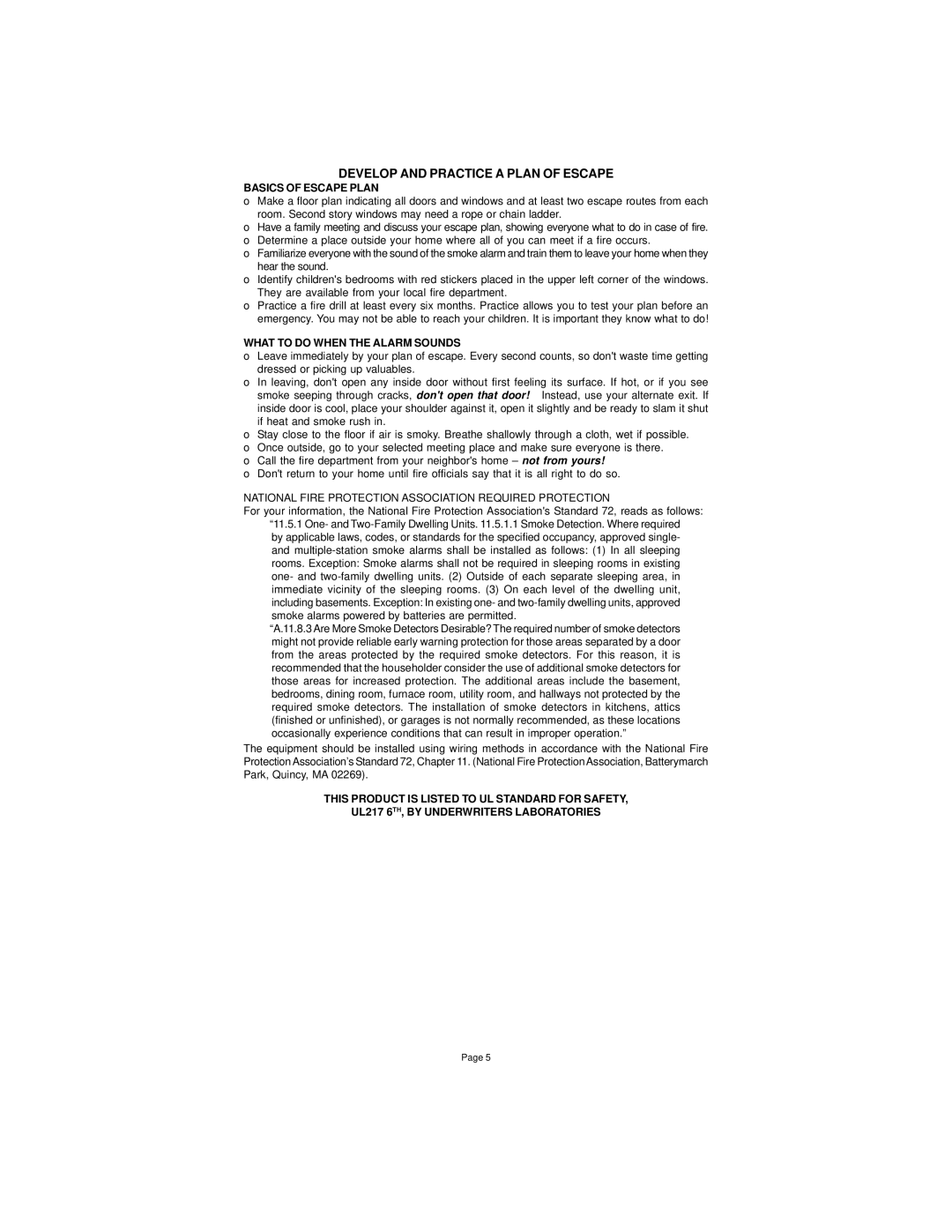SS-901 specifications
Universal Security Instruments SS-901 is a versatile and reliable smoke detector that enhances home safety and gives homeowners peace of mind. This model boasts a range of features designed to meet the needs of modern living while maintaining user-friendly operation.One of the standout features of the SS-901 is its dual sensor technology. It combines ionization and photoelectric sensors, which work together to effectively detect a wide range of fire types. Ionization sensors are highly sensitive to fast-flaming fires, while photoelectric sensors excel at detecting smoldering fires. This dual capability ensures comprehensive protection, significantly reducing the risk of false alarms while enhancing smoke detection accuracy.
The SS-901 is also equipped with a built-in battery backup. This feature ensures that even during power outages, the smoke detector continues to function, providing uninterrupted safety for the household. The unit operates on a long-lasting battery, minimizing the need for frequent replacements and enhancing overall convenience.
Another key characteristic of the Universal Security Instruments SS-901 is its user-friendly design. The unit includes a single test button, allowing homeowners to easily check the functionality of the smoke detector with just a press of a button. An LED indicator informs users of the device's status, including battery life and alarm status, delivering clear communication about the detector’s operation.
Additionally, the SS-901 incorporates a low battery warning signal. This alerts users when the battery is running low, prompting timely replacement to ensure continuous protection. The compact and sleek design of the smoke detector allows for easy installation in various environments, whether on a ceiling or wall, making it suitable for any home setting.
The Universal Security Instruments SS-901 complies with safety standards set by authorities, providing an extra layer of reassurance for users. The combination of advanced technologies, user-friendly features, and reliable operation makes the SS-901 a preferred choice for families looking to enhance their fire safety measures. Investing in this smoke detector is a proactive step towards creating a safer living environment, underlining the importance of fire safety in every household.
